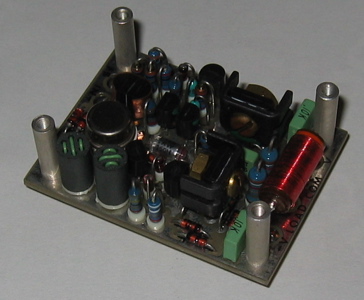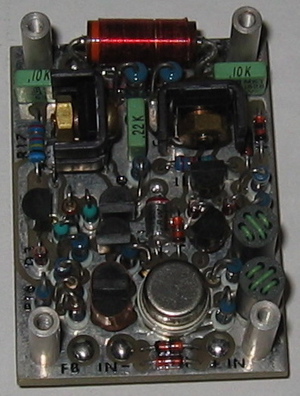dpaton
Well-known member
4 of them, which are unpotted and marked with a B. No identifiers other than that. The guy I got them from said they might be early JHs, or original Jensens. I'll post pics later (Monday?) when I get a chance. At $15 each, I couldn't pass them up.
WHat will I do with them? Please allow me a bit of a ramble here.
After doing a complete scouring of the Google results and the various and sundry META threads, I'm still at something of a loss as to what to do with them. I'd love to find a way to integrate them into my (always-being-redesigned) 8ch 1U mic pre, either as a pair of dual-990 preamps, or four single-990 preamps. The Jensen twin-servo concept is nifty, but the dual section reverse-log pot is a bear to find. Plus, I like the idea of 4 preamps, not just 2. Maybe one twin-servo and a pair of singles? There aren't many circuits I've found that look like they'll fit in 1U without a major redesign. The SCA J99 perhaps, with relocated front panel controls. Maybe one of JHs preamp schematics from the 990 app note? I'm feeling a little lost on all this right now. I know at least 4ch of the box will be based on Kev's mic pre (SSM2017/2142), but beyond that it's all up in the air. Really.
I keep thinking that a pair of the Jensen twin-servos would be really cool for the direct-to-stereo stuff I do from time to time, but I want these 990s in my recording rack too. Hmm. Decisions, decisions.
I'll get those pictures soon, I promise.
Thanks all.
-dave
WHat will I do with them? Please allow me a bit of a ramble here.
After doing a complete scouring of the Google results and the various and sundry META threads, I'm still at something of a loss as to what to do with them. I'd love to find a way to integrate them into my (always-being-redesigned) 8ch 1U mic pre, either as a pair of dual-990 preamps, or four single-990 preamps. The Jensen twin-servo concept is nifty, but the dual section reverse-log pot is a bear to find. Plus, I like the idea of 4 preamps, not just 2. Maybe one twin-servo and a pair of singles? There aren't many circuits I've found that look like they'll fit in 1U without a major redesign. The SCA J99 perhaps, with relocated front panel controls. Maybe one of JHs preamp schematics from the 990 app note? I'm feeling a little lost on all this right now. I know at least 4ch of the box will be based on Kev's mic pre (SSM2017/2142), but beyond that it's all up in the air. Really.
I keep thinking that a pair of the Jensen twin-servos would be really cool for the direct-to-stereo stuff I do from time to time, but I want these 990s in my recording rack too. Hmm. Decisions, decisions.
I'll get those pictures soon, I promise.
Thanks all.
-dave









